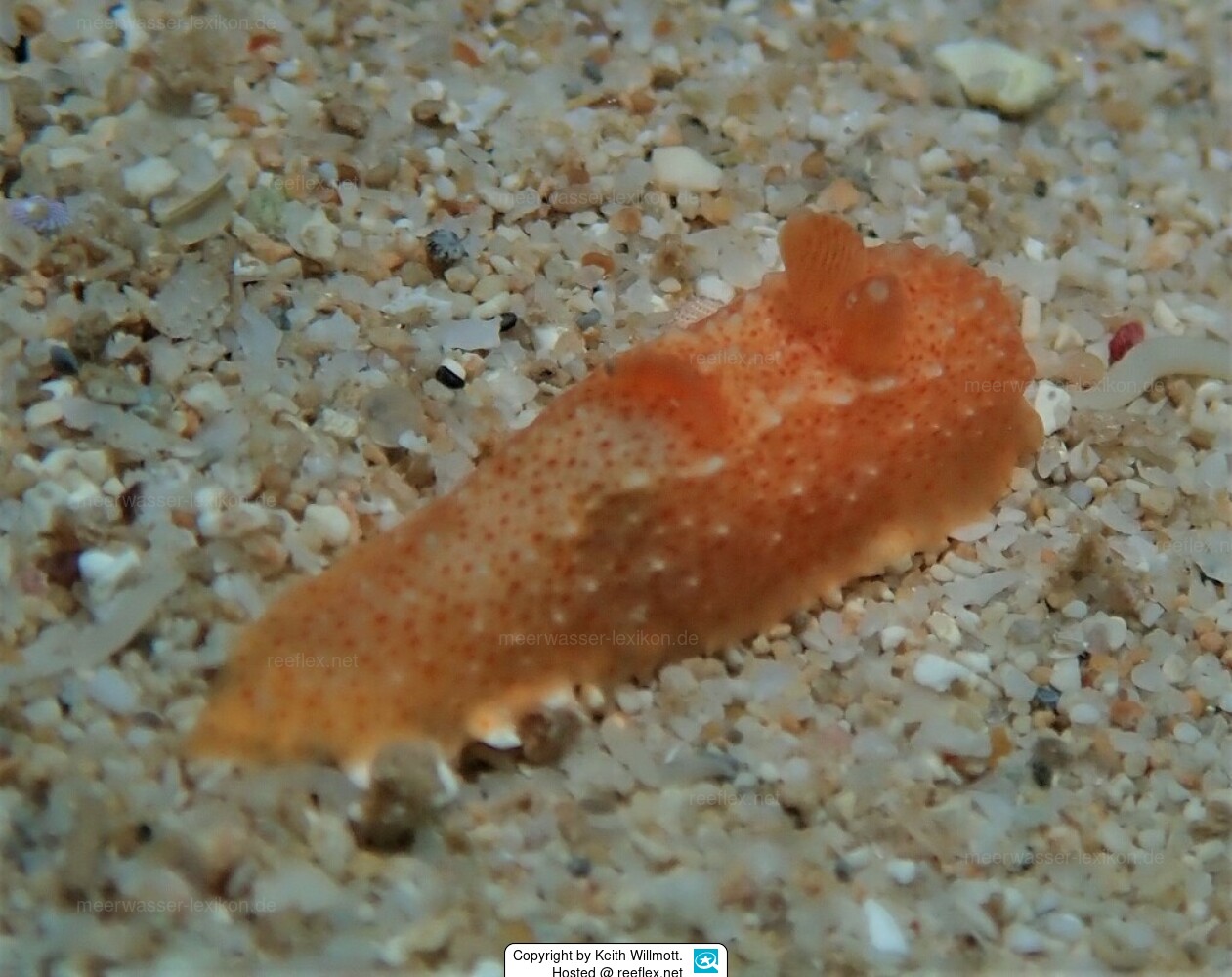Info
Paliolla cooki (Angas, 1864)
Paliolla cooki is native to temperate Australia from New South Wales to South Australia. It can also be found there, among other things, in ports. A post on the seaslugforum translates as: "The specimens were found on the underside of a rusty piece of iron on the ground under the pier at a depth of 4 m. The largest specimen was 10 mm long... The specimen was 6 mm long and was found on the underside of a piece of wood lying on the ground under the jetty at a depth of 3 m."
The small slug is pale pink to orange with darker orange spots. It feeds on the bryozoan Beania magallanica.
The size of the spawn suggests that this species evolved directly, i.e. H. There is no free-swimming larval stage, but small crawling slugs hatch directly from the eggs.
Synonymised names
Palio cookii (Angas, 1864) · unaccepted
Polycera cooki Angas, 1864 · unaccepted (original combination)
Paliolla cooki is native to temperate Australia from New South Wales to South Australia. It can also be found there, among other things, in ports. A post on the seaslugforum translates as: "The specimens were found on the underside of a rusty piece of iron on the ground under the pier at a depth of 4 m. The largest specimen was 10 mm long... The specimen was 6 mm long and was found on the underside of a piece of wood lying on the ground under the jetty at a depth of 3 m."
The small slug is pale pink to orange with darker orange spots. It feeds on the bryozoan Beania magallanica.
The size of the spawn suggests that this species evolved directly, i.e. H. There is no free-swimming larval stage, but small crawling slugs hatch directly from the eggs.
Synonymised names
Palio cookii (Angas, 1864) · unaccepted
Polycera cooki Angas, 1864 · unaccepted (original combination)







 Keith Willmott, USA
Keith Willmott, USA

